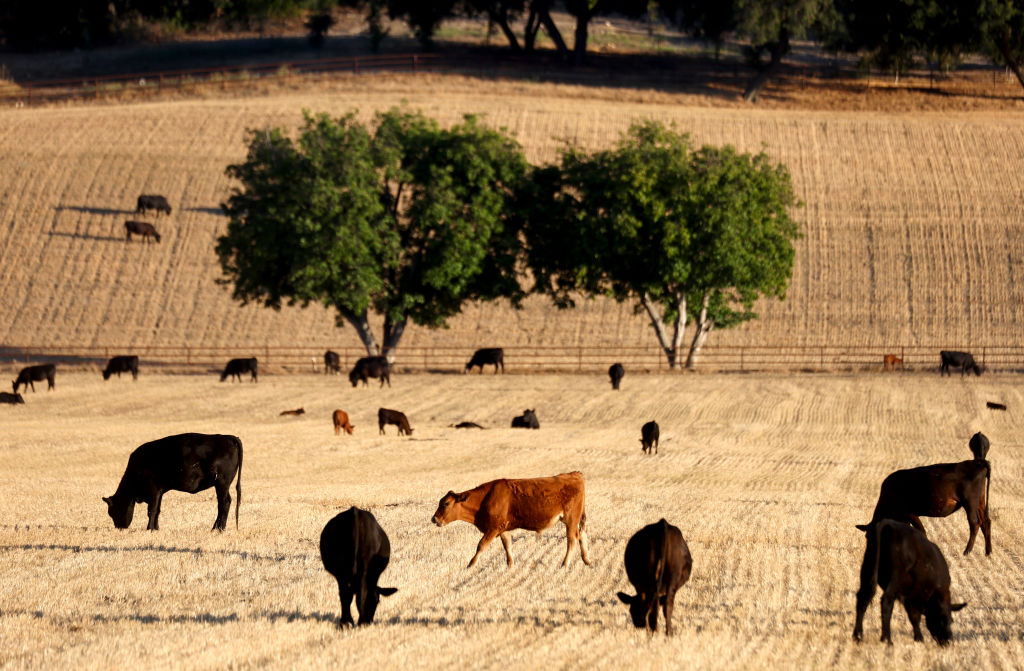
One of the most overlooked sources of carbon emissions comes from the food we eat. In the United States, greenhouse gasses from agriculture make up 11% of total emissions, according to the Environmental Protection Agency. Slightly more than half of that comes from farming and land clearing. The rest comes from the meat and dairy industry, largely in the form of methane from cattle burps and nitrous oxide from animal manure treatments, both of which are even more effective at warming the earth in the short term than CO2.
Yet, compared to other high emitting sectors, such as transport and electricity generation, very little government investment has gone into decarbonizing agriculture. Nowhere is that more visible than in the funding of agricultural research projects at U.S. land-grant universities, which were historically set up to focus on agriculture technology. Alex Park, a researcher working with ARIA, an environmental research non-profit, conducted an analysis of research grants given to 39 out of the U.S.’s 50 Land Grant Universities (some did not respond to requests for information, others had insufficient data). Out of the $3.5 billion granted by private industry, foundations, non-government organizations, and the federal government for 21,940 research projects since 2011, only $78 million—approximately 2.2%— was destined for climate-related research.
Corporate agriculture research grants were even less focused on climate, funding just $2.5 million—less than 1% of total expenditures—on just 35 climate related projects. That’s despite a statement by the American Farm Bureau Federation, a U.S. based agriculture industry lobbying group, saying “the only way agriculture will be able to achieve the dramatic goals being discussed today is through investments in research to develop the next generation of technology and practices.”
As recipients of both federal and private funding, these agriculturally academic powerhouses should be at the forefront of advances in climate-smart agriculture. But as long as the U.S. government and the agriculture industry focus resources on business-as-usual research, and not solutions for reducing America’s food and agriculture emissions, reducing overall emissions will continue to be an elusive challenge.
More Must-Reads from TIME
- Inside Elon Musk’s War on Washington
- Meet the 2025 Women of the Year
- The Harsh Truth About Disability Inclusion
- Why Do More Young Adults Have Cancer?
- Colman Domingo Leads With Radical Love
- How to Get Better at Doing Things Alone
- Cecily Strong on Goober the Clown
- Column: The Rise of America’s Broligarchy
Contact us at letters@time.com



